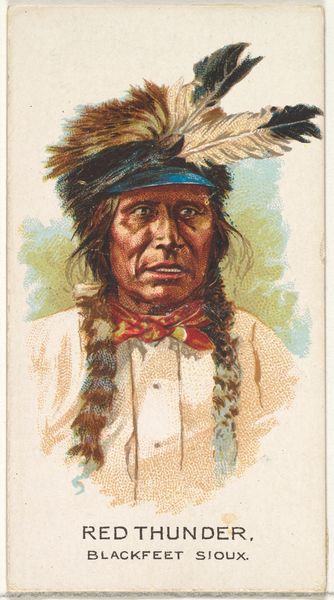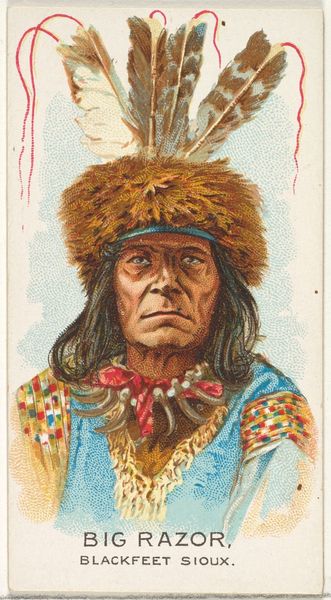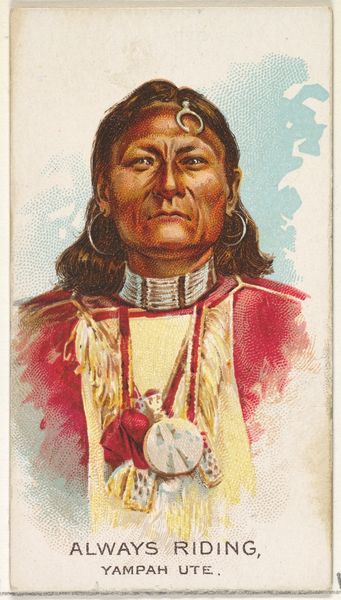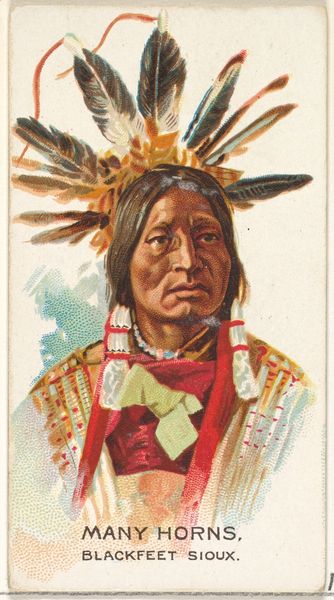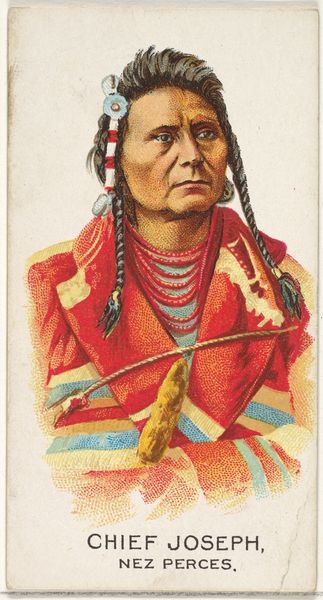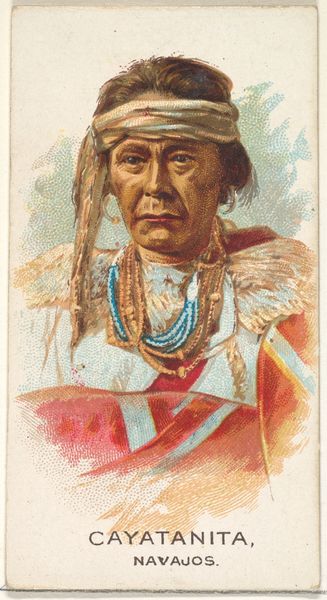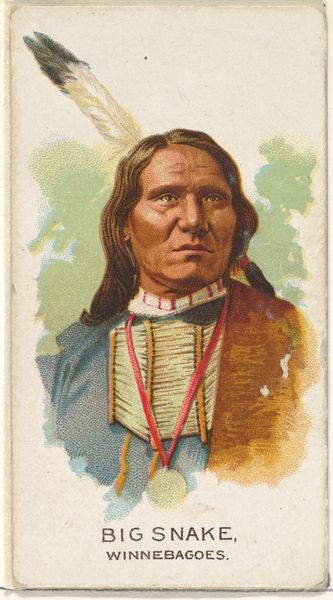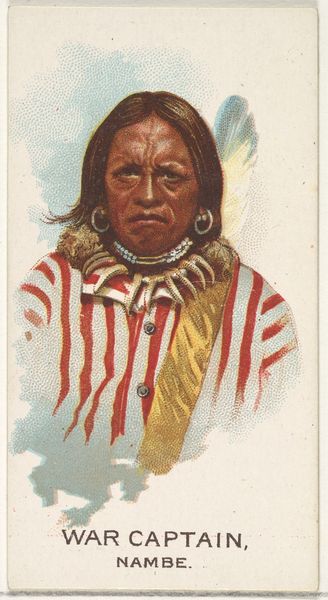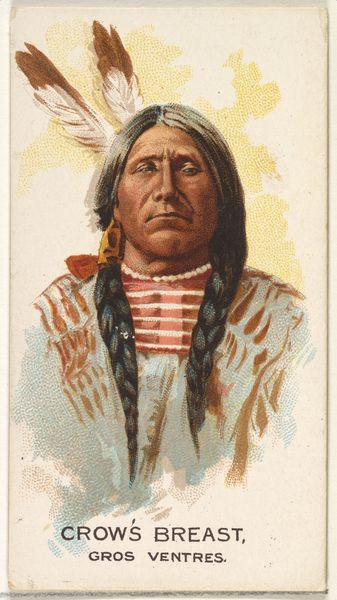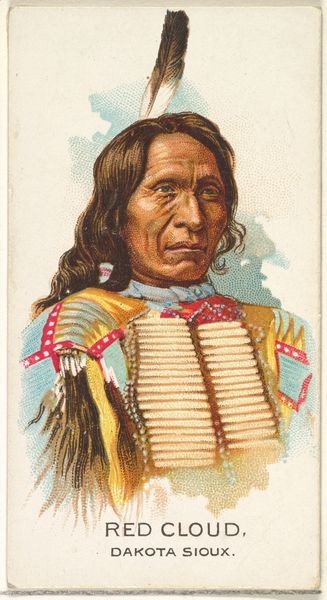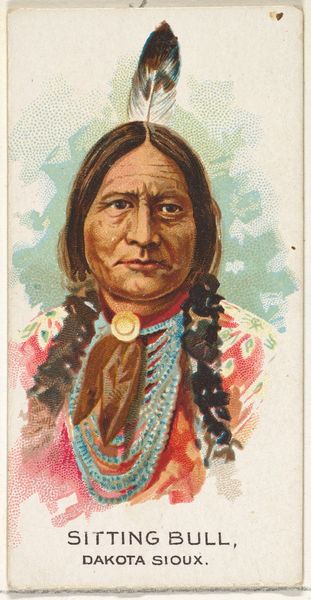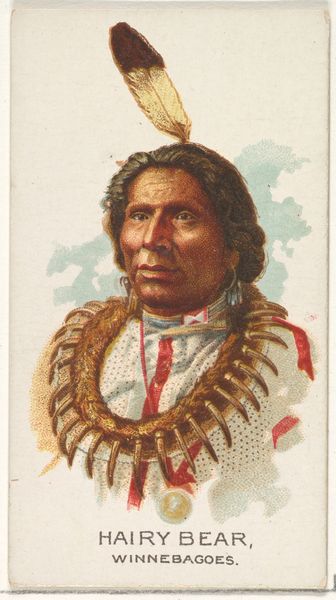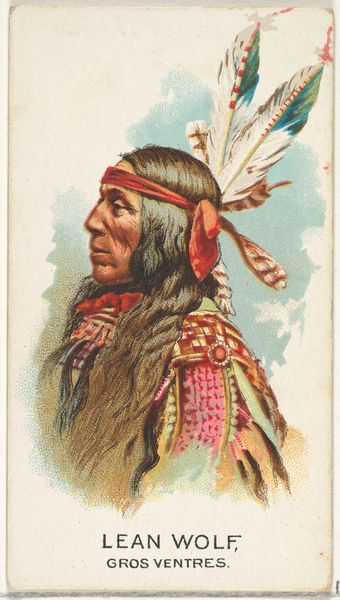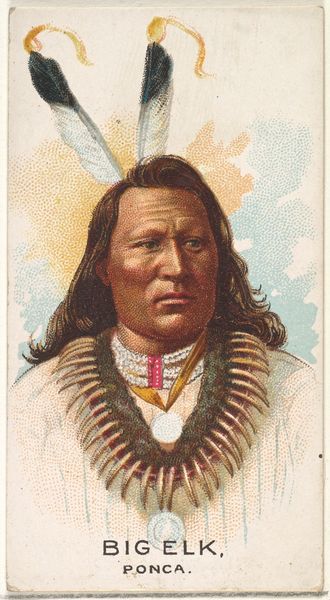
Rushing Bear, Pawnee, from the American Indian Chiefs series (N2) for Allen & Ginter Cigarettes Brands 1888
0:00
0:00
#
portrait
# print
#
caricature
#
coloured pencil
#
coffee painting
Dimensions: Sheet: 2 3/4 x 1 1/2 in. (7 x 3.8 cm)
Copyright: Public Domain
Curator: Ah, here's a fascinating artifact from a very specific time and purpose: this is "Rushing Bear, Pawnee," a chromolithograph drawing from the "American Indian Chiefs" series, made in 1888 for Allen & Ginter cigarette packs. Editor: It’s striking! A little card portraying Rushing Bear... There's something so dignified, yet the bright colors and almost cartoonish style give it an air of... otherness, you know? Curator: Precisely. Allen & Ginter were tapping into the late 19th-century fascination with both portraiture and "exotic" cultures. The chromolithography process allowed for mass production of these collectible cards inserted into cigarette packs, promoting brand loyalty through a combination of imagery and consumerism. Think of the convergence of Japonisme and Indigenous representation, how it commodifies both. Editor: It’s heavy, seeing such blatant use of cultural image for a consumer product. Do we know if Rushing Bear, or any of the represented chiefs, had any say in this? Curator: Almost certainly not. The images, while presented as portraits, served to exoticize and, ultimately, control the narrative surrounding Indigenous people in the American consciousness. The idealized, almost romantic depictions contrast sharply with the reality of forced assimilation and displacement. We see the application of coloured pencils and printing bringing this representation of cultural appropriation together into this tokenized consumer culture item. Editor: Right, the sort of forced assimilation. The bright headband, the very idea of turning a human being into a collectable, and printed at this size! Yet...Rushing Bear's expression feels very stoic. Almost a melancholic knowing. I'm left with an uneasy tension—a beauty tainted by this history of commodification and consumption. Curator: It’s that tension that makes the work so compelling, even disturbing. It forces us to confront the complex layers of colonialism, representation, and the commodification of identity in late 19th-century America, through something as banal as cigarette packaging. Editor: Yes. Banal, and yet, it speaks volumes, doesn’t it? Leaves you chewing on the bitterness long after the smoke clears, you know? Curator: Indeed. An image meant for fleeting pleasure, yet now serves as a potent reminder of a complicated past, urging critical thought about historical depictions and their continuing impacts.
Comments
No comments
Be the first to comment and join the conversation on the ultimate creative platform.
